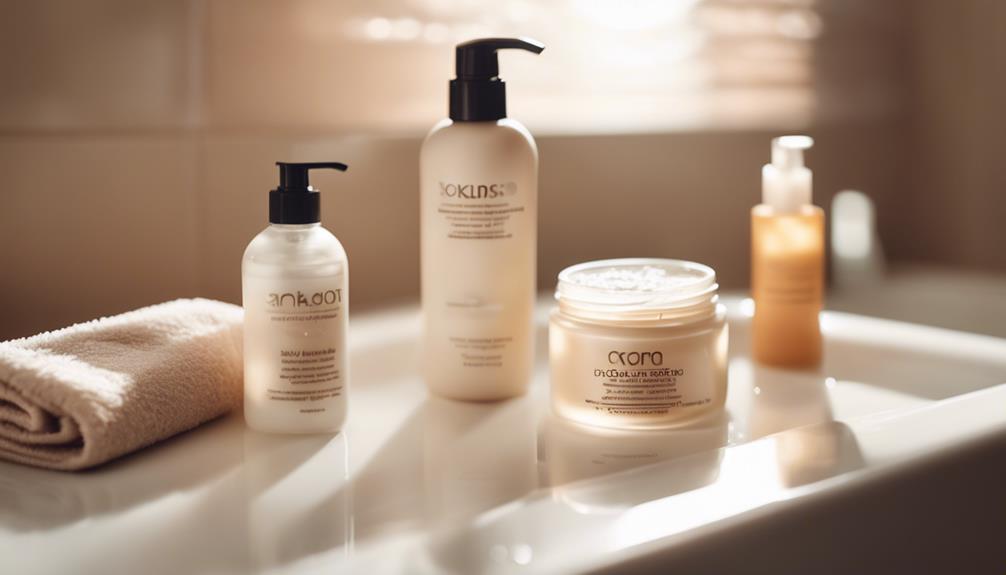Tanning beds significantly increase the risk of skin cancer, especially melanoma, with individuals under 30 facing a 75% higher likelihood of developing this deadly cancer. The harmful UV radiation emitted by these devices causes cumulative DNA damage over time, raising the risk of various skin cancers such as basal cell carcinoma and squamous cell carcinoma. Regulatory agencies categorize tanning beds as known carcinogens, underscoring the crucial importance of raising awareness about their dangers. Understanding these risks is vital for making informed decisions. By delving further into the consequences and safe practices related to indoor tanning, you can enhance your health protection.
Key Takeaways
- Tanning beds emit harmful UV radiation, significantly increasing the risk of developing skin cancers, especially melanoma, in users under 30.
- Cumulative DNA damage from repeated tanning bed use compounds cancer risk over time, leading to serious health implications.
- Indoor tanning is classified as a known carcinogen by regulatory agencies, highlighting its dangers to skin health.
- Protective eyewear is essential during tanning sessions to prevent UV-related eye damage, such as cataracts and photokeratitis.
Tanning Bed Risks Explained
Tanning beds pose considerable health risks due to their emission of harmful UV radiation, which has been directly linked to an increased likelihood of developing various forms of skin cancer.
The exposure to UV radiation from tanning beds markedly raises the risk of skin damage, leading to both immediate and long-term health consequences.
Research indicates that individuals who use tanning beds before the age of 30 have a 75% higher risk of developing melanoma, one of the deadliest skin cancers. Additionally, the cumulative DNA damage caused by repeated tanning bed use compounds this risk over time.
Regulatory agencies classify tanning beds as a known carcinogen, underscoring the urgent need for awareness and precaution regarding indoor tanning practices and their associated dangers.
Skin Cancer Types Overview
Skin cancer encompasses several types, each with distinct characteristics, risk factors, and potential outcomes that warrant careful consideration and awareness. The three primary types of skin cancer include basal cell carcinoma (BCC), squamous cell carcinoma (SCC), and melanoma. Understanding these differences is essential for early detection and treatment.
| Type of Skin Cancer | Key Characteristics |
|---|---|
| Basal Cell Carcinoma | Most common; rarely metastasizes |
| Squamous Cell Carcinoma | More aggressive; can spread if untreated |
| Melanoma | Less common; highly lethal; requires immediate attention |
| Risk Factors | UV exposure, fair skin, family history |
Awareness of these skin cancer types can empower individuals to make informed decisions regarding sun protection and tanning practices.
Key Risk Factors Identified

Exposure to ultraviolet (UV) radiation, both from natural sunlight and artificial sources like tanning beds, remains the primary risk factor for developing various types of skin cancer.
Indoor tanning, particularly before the age of 30, considerably heightens the risk of melanoma, with studies indicating a 75% increased likelihood for users under 35. Additionally, the cumulative DNA damage caused by repeated exposure to tanning beds escalates cancer risk over time.
Regulatory bodies classify tanning beds as a known carcinogen, reinforcing the danger they pose. Types of skin cancer associated with tanning bed use include melanoma, basal cell carcinoma, and squamous cell carcinoma, underscoring the critical importance of understanding and mitigating these key risk factors.
Importance of Eye Protection
Protecting the eyes during indoor tanning is essential, as UV rays can cause significant damage, increasing the risk of cataracts and eye cancers over time.
The exposure to ultraviolet radiation, particularly UVA rays, can lead to various ocular issues, including photokeratitis, commonly known as sunburn of the eye. Prolonged exposure without adequate protection can also contribute to vision problems later in life.
As a result, using protective eyewear, such as tanning goggles, is important to shield the eyes from harmful rays during tanning sessions.
It is critical to prioritize eye safety alongside skin health, as neglecting eye protection can result in cumulative damage and heightened risk for serious conditions.
Consequently, adopting proper eye protection practices during indoor tanning is imperative for overall health.
Pre-Tanning Skin Preparation

Preparing the skin effectively before a tanning session is essential for achieving ideal results and minimizing potential damage.
To guarantee even tanning, exfoliate the skin 24 hours prior to the session, removing dead cells that can create uneven patches. It is important to avoid lotions containing oils or fragrances, as these can interfere with tanning absorption.
Conducting a patch test for sensitivity to tanning products is advisable, especially for first-time users. Ascertain the skin is clean and dry before entering the tanning bed, as this maximizes tanning effectiveness.
Additionally, maintaining skin hydration in the days leading up to the session enhances overall results. Investing in quality tanning goggles and using face covers can protect delicate facial skin during the process.
Safe Tanning Practices
Implementing safe tanning practices is vital for mitigating the risks associated with UV radiation and maintaining skin health.
To reduce exposure, it is advisable to limit tanning bed sessions and adhere to recommended time limits. Always use protective eyewear to safeguard the eyes from harmful UV rays.
Pre-tanning, exfoliating the skin and ensuring it is clean and dry enhances tanning results. Applying a broad-spectrum sunscreen before tanning sessions is essential in protecting against UV damage.
Hydrating the skin both before and after tanning helps maintain moisture balance. Additionally, consider using specially formulated tanning lotions and face covers for added protection.
Awareness and adherence to these practices can markedly contribute to a safer tanning experience.
Long-Term Health Implications

The long-term health implications of tanning bed use extend beyond immediate cosmetic concerns, greatly increasing the risk of developing various forms of skin cancer and other related health issues over time.
Studies indicate that indoor tanning considerably raises the likelihood of melanoma, basal cell carcinoma, and squamous cell carcinoma. Remarkably, individuals who use tanning beds before age 30 face a 75% heightened risk of melanoma, a lethal skin cancer.
The cumulative DNA damage from repeated UV exposure exacerbates these risks, leading to potential long-term health complications.
Additionally, regulatory agencies classify tanning beds as known carcinogens, underscoring the critical need for awareness and informed decision-making regarding tanning practices to mitigate these dangerous outcomes.
How Can I Reduce the Risk of Skin Cancer While Using Tanning Beds?
When using tanning beds, it’s important to follow some essential tanning bed tips to lower the risk of skin cancer. Limit your sessions, always wear protective eyewear, and never use tanning beds if you have fair skin or a history of skin cancer. Regular skin checks are essential.
Conclusion
The use of tanning beds presents significant health risks, particularly regarding skin cancer development.
Research indicates a direct correlation between UV exposure from indoor tanning and increased incidences of melanoma, basal cell carcinoma, and squamous cell carcinoma.
Understanding these dangers, alongside the criticality of protective measures, highlights the importance of informed decision-making concerning tanning practices.
Prioritizing long-term health over short-term aesthetic desires ultimately fosters a culture of awareness regarding the severe implications of UV radiation exposure.










